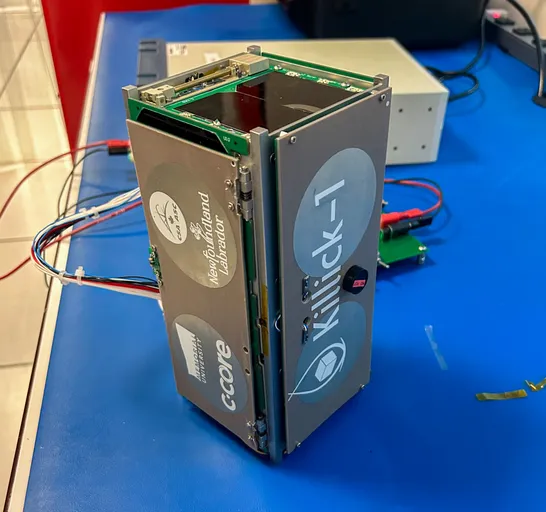What is a CubeSat?

A CubeSat, short for Cube Satellite, is a type of miniaturized satellite used for various purposes, including scientific research, technology demonstration, and education. CubeSats are small, cube-shaped spacecraft with standardized dimensions, which makes them relatively inexpensive to develop and launch compared to traditional, larger satellites.
The most common CubeSat form factor is a 10x10x10 centimeter (1U) cube, with a mass of approximately 1 kilogram. However, variations exist, including 2U (20x10x10 cm), 3U (30x10x10 cm), and so on. These standard sizes allow for easy integration and compatibility with launch systems. MUNStar-1 will be a 3U CubeSat, which is a step up from its predecessor, Killick-1, which was a 2U CubeSat
CubeSats are often used by universities, research institutions, and commercial entities to conduct experiments and research in space. They can be deployed as secondary payloads on larger launch missions, reducing the cost of reaching space. Despite their small size, CubeSats can carry a wide range of scientific instruments, sensors, and communication equipment, enabling them to perform a variety of tasks, such as Earth observation, environmental monitoring, technology testing, and more.
The most common CubeSat form factor is a 10x10x10 centimeter (1U) cube, with a mass of approximately 1 kilogram. However, variations exist, including 2U (20x10x10 cm), 3U (30x10x10 cm), and so on. These standard sizes allow for easy integration and compatibility with launch systems. MUNStar-1 will be a 3U CubeSat, which is a step up from its predecessor, Killick-1, which was a 2U CubeSat
CubeSats are often used by universities, research institutions, and commercial entities to conduct experiments and research in space. They can be deployed as secondary payloads on larger launch missions, reducing the cost of reaching space. Despite their small size, CubeSats can carry a wide range of scientific instruments, sensors, and communication equipment, enabling them to perform a variety of tasks, such as Earth observation, environmental monitoring, technology testing, and more.